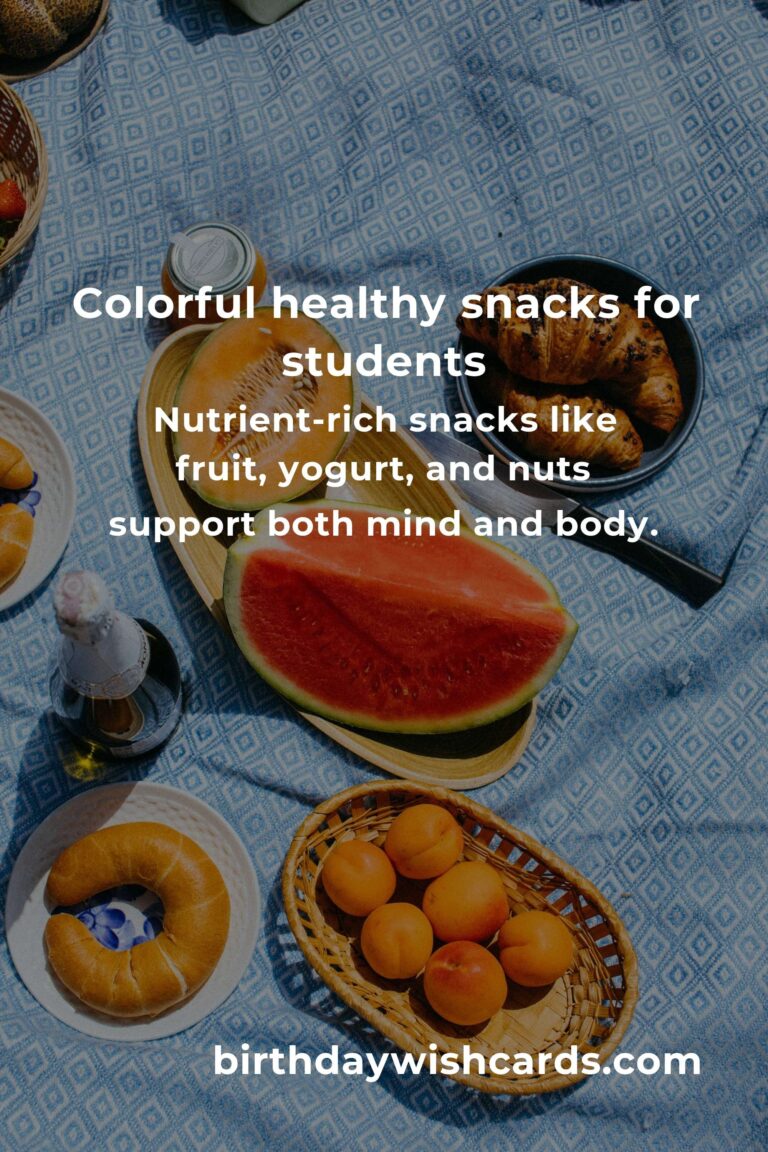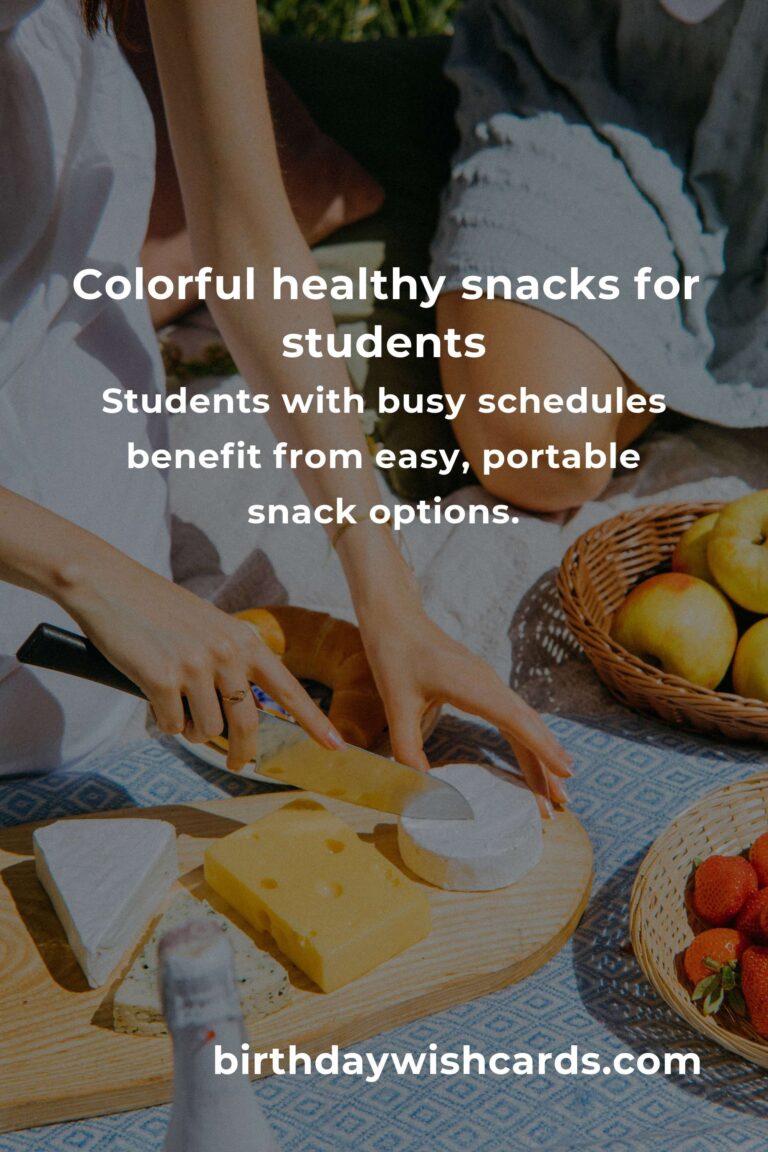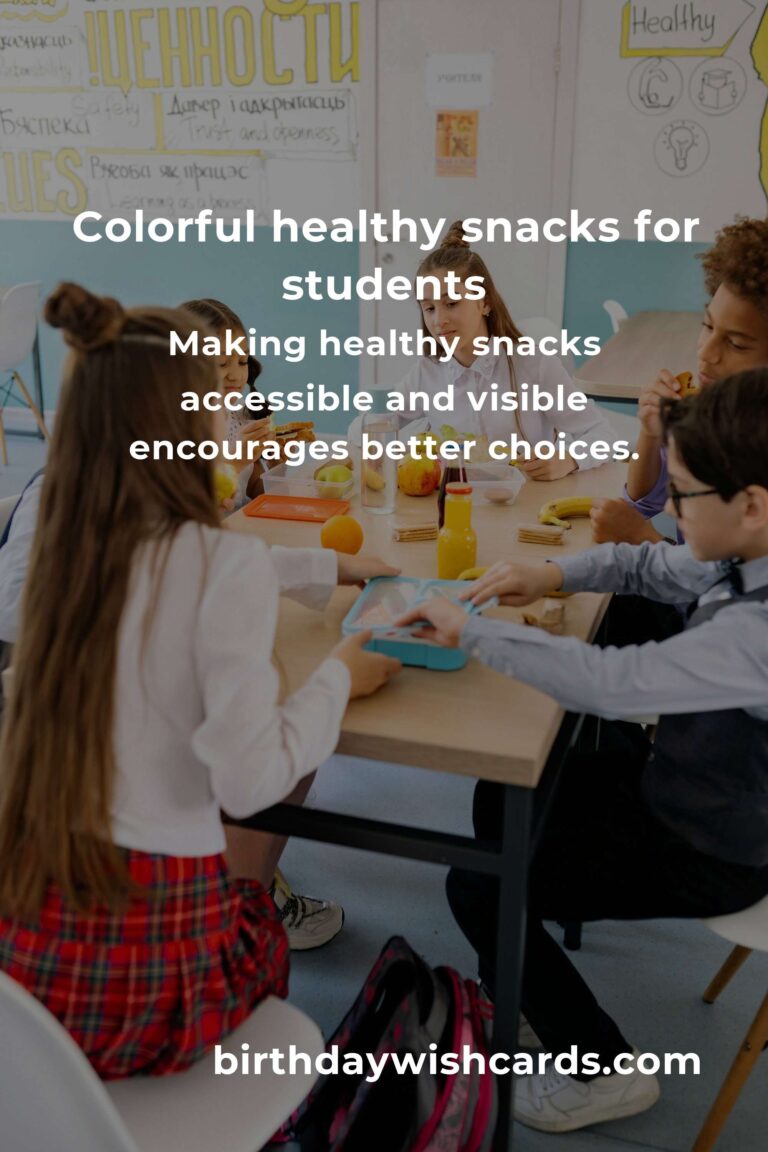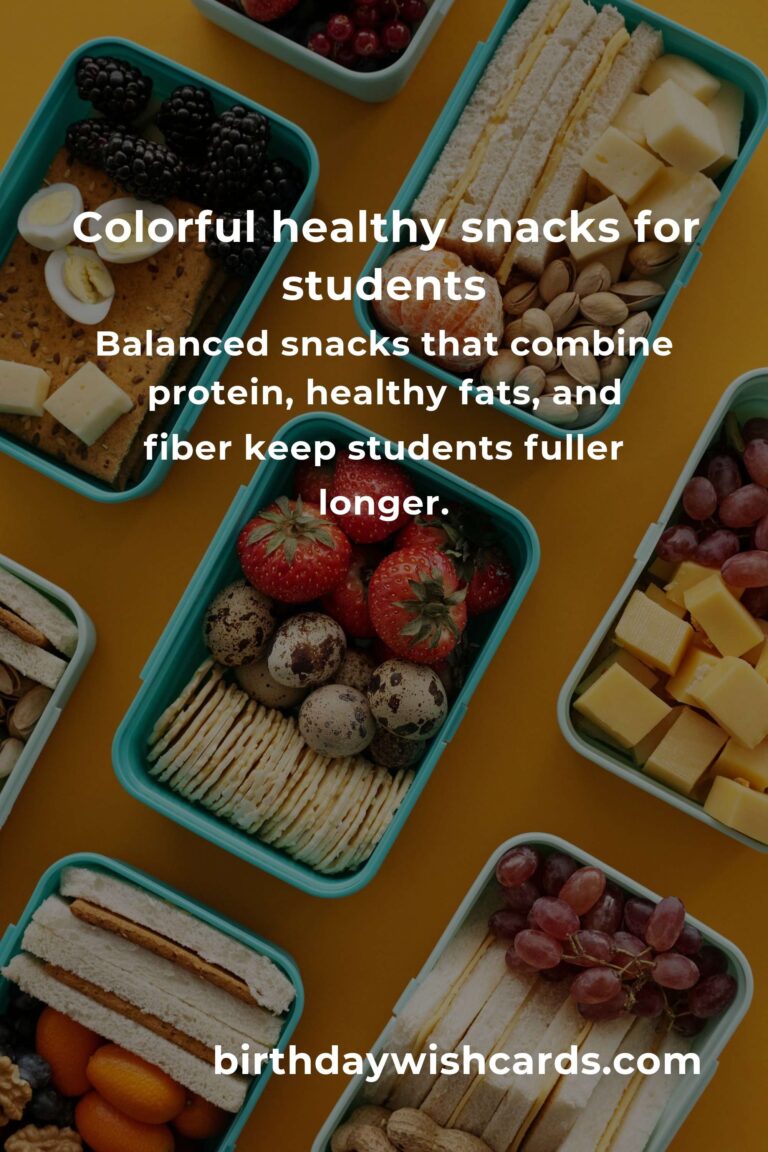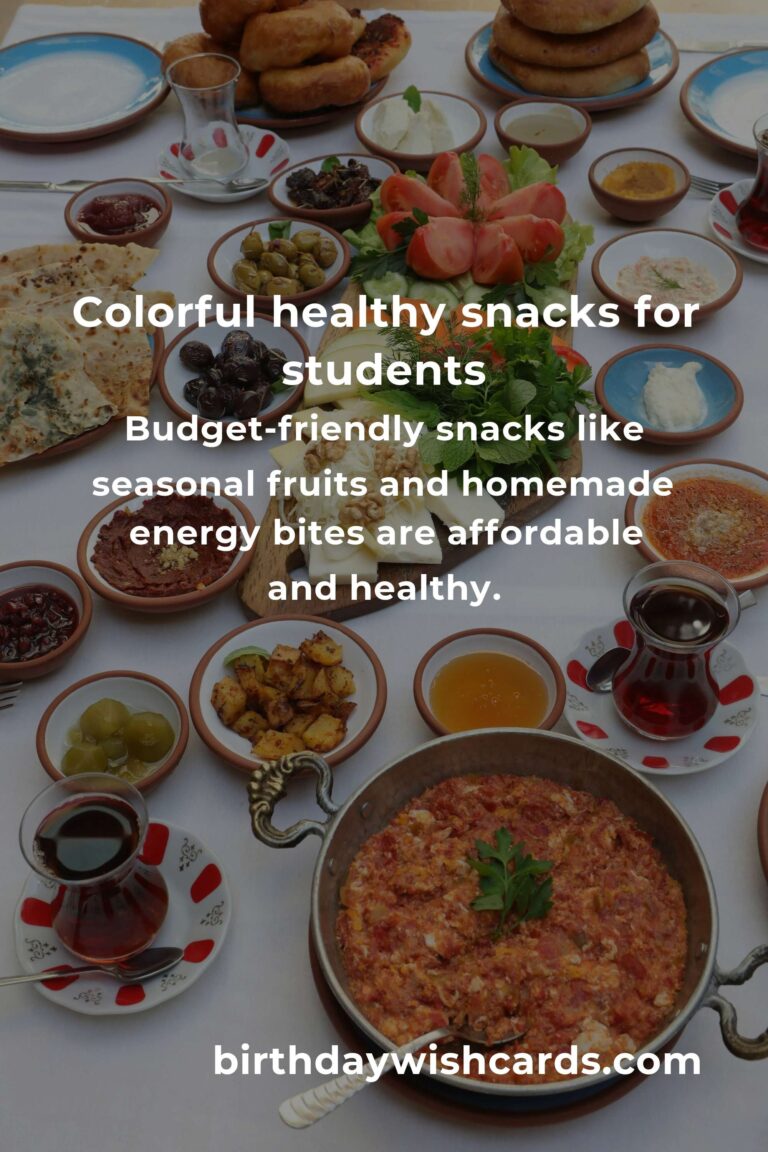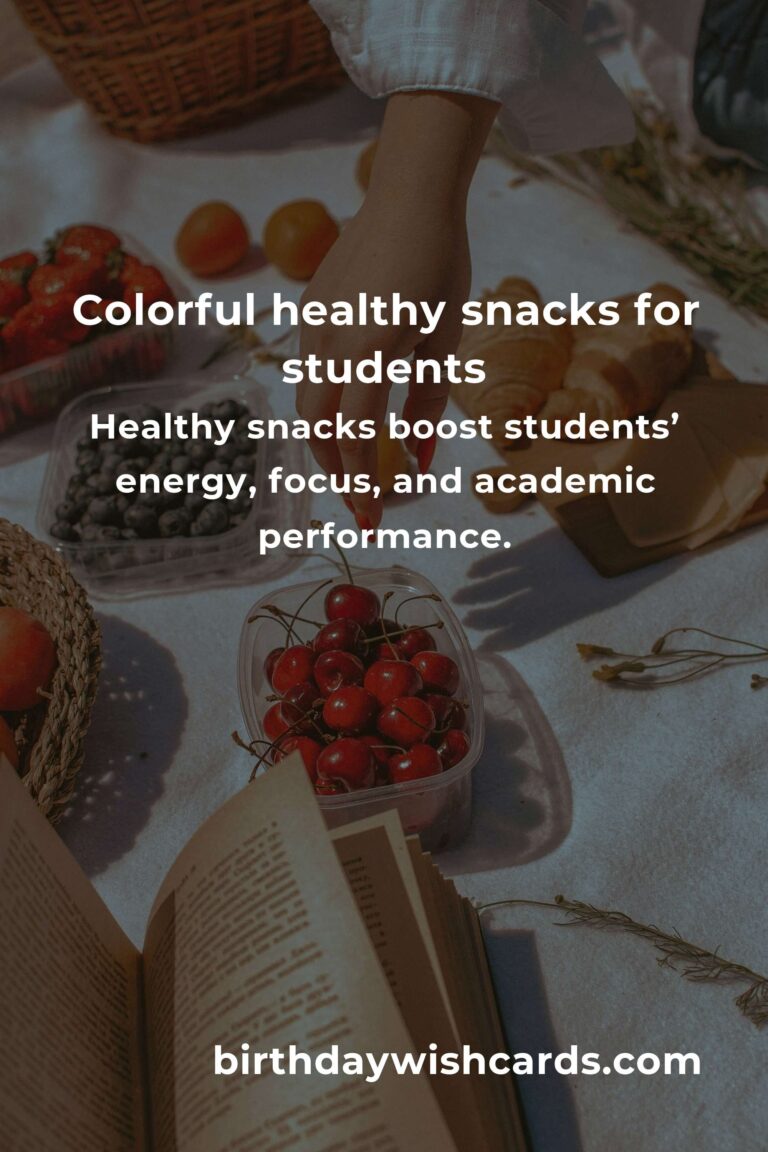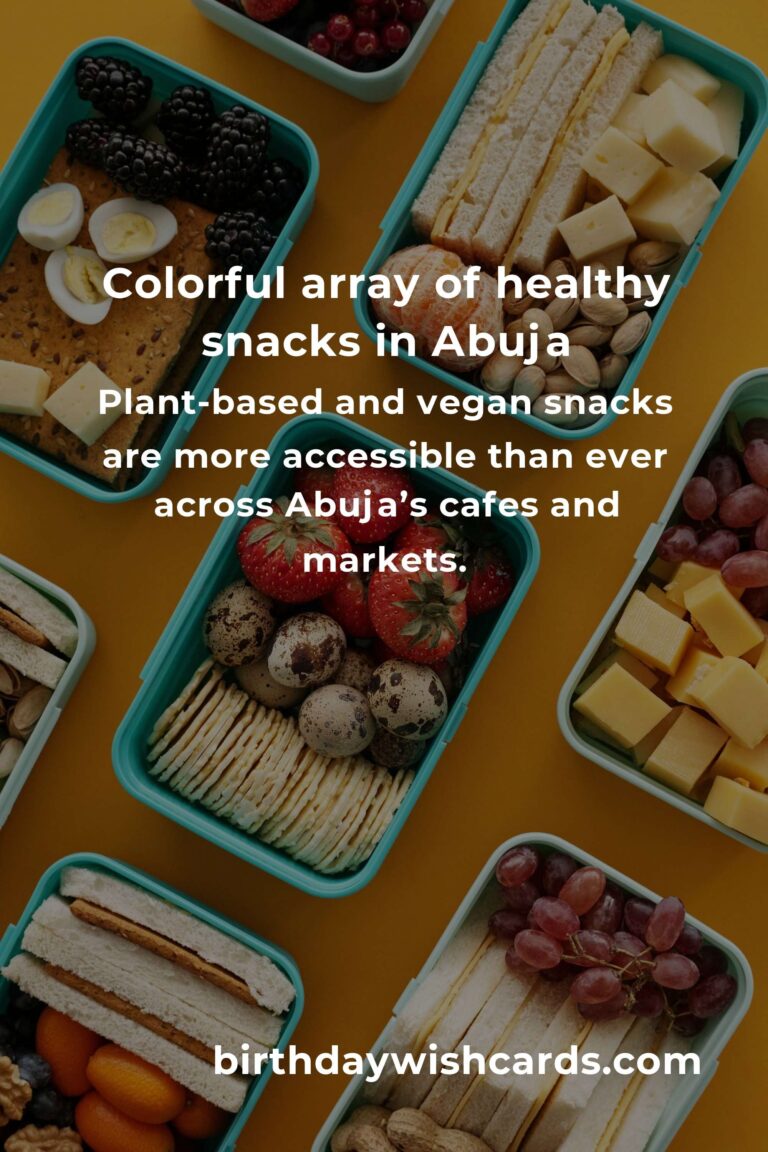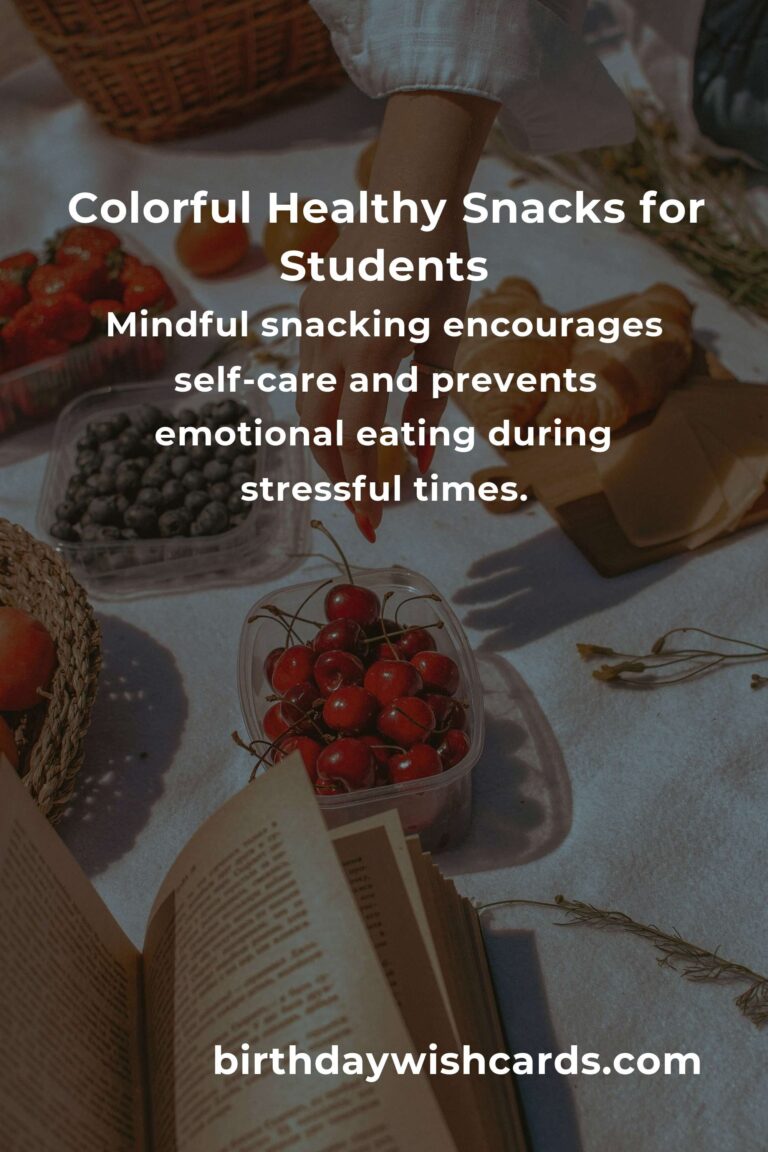
In today’s fast-paced educational environment, students are constantly on the go, juggling classes, assignments, extracurricular activities, and social commitments. With such a busy lifestyle, it’s easy to reach for convenient but unhealthy snacks. However, what we eat directly fuels our minds and bodies, impacting energy, mood, and academic performance. Choosing healthy snacks can make a world of difference—not only boosting concentration and memory but also supporting overall well-being. Let’s explore the best healthy snacks for students and how to make smart, delicious choices that power success.
Why Healthy Snacks Matter for Students
It’s no secret that the brain needs proper nutrition to function at its best. Students who snack on nutrient-rich foods experience improved focus, higher energy levels, and enhanced memory retention. In contrast, sugary, processed snacks cause energy crashes and can even increase stress and anxiety. Whether studying for exams, participating in sports, or simply getting through a long school day, healthy snacks help students feel alert, satisfied, and resilient.
Common Challenges: Why Do Students Struggle to Snack Healthy?
Despite the benefits, many students find it challenging to maintain healthy snacking habits. Here are some common obstacles:
- Time Constraints: Busy schedules leave little time for meal prep.
- Availability: Unhealthy snacks are often more accessible and affordable.
- Peer Influence: Social situations can pressure students into unhealthy choices.
- Lack of Awareness: Many students aren’t taught about balanced nutrition.
Fortunately, with a little planning and creativity, healthy snacking can be simple, affordable, and satisfying.
Top 12 Healthy Snacks for Students
Choosing the right snacks doesn’t have to be complicated. Here are twelve wholesome options that are easy to prepare, portable, and delicious:
1. Fresh Fruit
Nature’s original fast food, fruits like apples, bananas, oranges, and berries are packed with vitamins, minerals, and fiber. Slice them up or grab them whole for a quick energy boost.
2. Greek Yogurt with Honey and Berries
Rich in protein and probiotics, Greek yogurt supports gut health and keeps you fuller for longer. Add a drizzle of honey and a handful of berries for natural sweetness and antioxidants.
3. Trail Mix
Mix unsalted nuts, seeds, and dried fruits for a customizable snack. Nuts provide healthy fats and protein, while dried fruit adds a touch of sweetness. Skip the chocolate candies to keep it healthy!
4. Hummus and Veggies
Pair crunchy carrot sticks, cucumber slices, or bell pepper strips with creamy hummus. This combination offers fiber, vitamins, and plant-based protein.
5. Whole Grain Crackers and Nut Butter
Opt for whole grain crackers and spread with almond or peanut butter. This snack delivers complex carbs for sustained energy and healthy fats for brain function.
6. Hard-Boiled Eggs
Eggs are a nutrient powerhouse, loaded with protein and essential vitamins. Boil a batch at the start of the week for a convenient grab-and-go snack.
7. Cheese Sticks or Slices
Low-fat cheese provides calcium and protein. Pair with whole grain crackers or fruit for a balanced snack.
8. Popcorn
Plain, air-popped popcorn is a whole grain snack that’s high in fiber and low in calories. Skip the butter and salt—try tossing with a sprinkle of nutritional yeast for a cheesy, vitamin-rich flavor.
9. Oatmeal Energy Bites
Combine oats, nut butter, honey, and a few chocolate chips or raisins. Roll into balls and refrigerate for a quick, energizing treat.
10. Edamame
These steamed soybeans are high in protein and fiber. Sprinkle with a little sea salt for a satisfying, savory snack.
11. Rice Cakes with Avocado
Top plain rice cakes with mashed avocado and a pinch of sea salt. Avocado is rich in healthy fats and keeps you feeling full.
12. Smoothies
Blend spinach, banana, frozen berries, and Greek yogurt for a nutrient-dense snack that’s easy to sip between classes.
How to Make Healthy Snacking a Habit
Building lasting habits takes intention and effort. Here are some practical tips to integrate healthy snacks into your daily routine:
- Prep Ahead: Wash and chop fruits and veggies in advance. Portion out snacks in containers or bags for easy access.
- Stock Wisely: Keep healthy options visible and within reach at home or in your backpack.
- Read Labels: Watch out for added sugars, salt, and unpronounceable ingredients in packaged foods.
- Listen to Your Body: Snack when you’re hungry, not out of boredom or stress. Practice mindful eating.
- Stay Hydrated: Sometimes we confuse thirst for hunger. Drink water regularly throughout the day.
Healthy Snacks for Different Student Needs
Every student is unique, and so are their nutritional needs. Here’s how to tailor snacks to different situations:
For Busy Mornings
Try overnight oats, fruit muffins made with whole grains, or a smoothie for breakfast on the run.
For Study Sessions
Focus on snacks that boost brain power: walnuts, blueberries, dark chocolate, or a veggie wrap with lean protein.
For Athletes
Choose snacks rich in protein and complex carbs, like turkey roll-ups, cottage cheese with pineapple, or peanut butter on whole grain bread.
For Stress Relief
Magnesium-rich foods like pumpkin seeds, bananas, and dark leafy greens help soothe nerves and support relaxation.
Budget-Friendly Healthy Snack Ideas
You don’t need to break the bank to eat well. Here are some affordable options:
- Buy seasonal fruits and vegetables—they’re cheaper and fresher.
- Opt for store-brand yogurt, nut butters, and whole grains.
- Make your own trail mix or energy bites in bulk.
- Choose canned beans or chickpeas for quick protein-rich snacks.
Quick Recipes: DIY Healthy Snacks for Students
1. No-Bake Energy Bites
Ingredients: 1 cup oats, 1/2 cup peanut butter, 1/3 cup honey, 1/2 cup ground flaxseed, 1/2 cup mini chocolate chips or raisins. Mix, roll into balls, and refrigerate.
2. Veggie and Hummus Cups
Ingredients: Sliced carrots, celery, bell peppers, and cherry tomatoes. Spoon hummus into the bottom of small jars, add veggies on top for easy dipping.
3. Apple Sandwiches
Ingredients: Sliced apples (rings), nut butter, granola. Spread nut butter on apple rings, sprinkle with granola, and sandwich together.
How Parents and Schools Can Support Healthy Snacking
Parents and educators play a critical role in shaping students’ eating habits. Here’s how they can help:
- Provide healthy snacks at home and in lunchboxes.
- Encourage cooking and preparing snacks together.
- Offer nutrition education and lead by example.
- Work with schools to promote healthy options in cafeterias and vending machines.
Snack Smart: Avoid These Common Pitfalls
- Beware of Portion Sizes: Even healthy snacks can become unhealthy in large amounts.
- Limit Sugary Drinks: Stick to water, milk, or unsweetened beverages over soda and energy drinks.
- Don’t Skip Meals: Snacks should supplement, not replace, balanced meals.
Embracing a Healthy, Balanced Lifestyle
Healthy snacking is just one part of a balanced lifestyle. Combined with regular movement, quality sleep, and stress management, smart snack choices help students perform at their best inside and outside the classroom. The journey to better health doesn’t have to be overwhelming. Start small, try new recipes, and celebrate each healthy choice along the way.
Conclusion: Healthy Snacks, Happier Students
In the end, healthy snacks are more than just food—they’re an investment in students’ potential. By fueling the body and mind with nourishing choices, students unlock the energy, focus, and resilience needed for academic and personal success. Whether you’re a student, parent, or educator, remember that every small snack decision matters. Choose wisely, snack joyfully, and watch the transformation unfold.
Healthy snacks boost students’ energy, focus, and academic performance.
Making healthy snacks accessible and visible encourages better choices.
Simple prep and planning can help students avoid unhealthy, processed snacks.
Nutrient-rich snacks like fruit, yogurt, and nuts support both mind and body.
Students with busy schedules benefit from easy, portable snack options.
Budget-friendly snacks like seasonal fruits and homemade energy bites are affordable and healthy.
Parents and schools play a vital role in promoting healthy snacking habits.
Mindful snacking—eating when hungry and choosing whole foods—improves well-being.
Balanced snacks that combine protein, healthy fats, and fiber keep students fuller longer.
Starting with small, healthy snack changes can lead to lasting lifestyle improvements.
#HealthySnacks #StudentWellness #SmartEating #BrainFuel #HealthyHabits #StudentLife #NutritionMatters #SnackSmart


